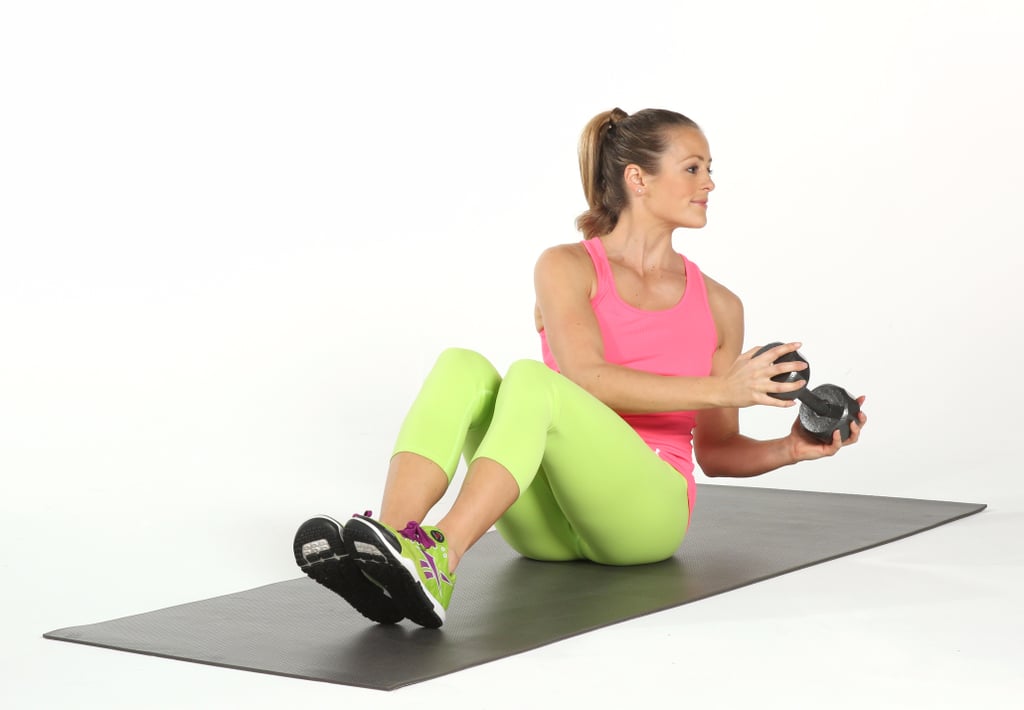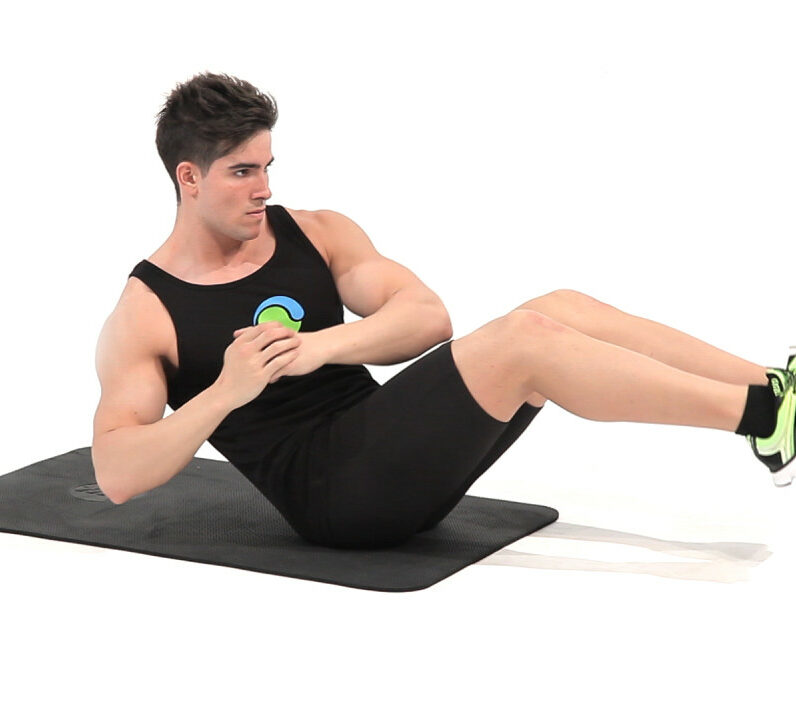Russian Twists, a dynamic core exercise, offer a powerful way to strengthen abdominal muscles and improve overall fitness. This guide delves into the proper form, variations, benefits, and potential pitfalls of this popular exercise, providing a comprehensive resource for fitness enthusiasts of all levels.
From beginner modifications to advanced progressions, we explore how to safely and effectively incorporate Russian twists into your workout routine. We’ll examine the muscles engaged, compare it to similar exercises, and address common mistakes to help you maximize results and avoid injury. Whether you’re a seasoned athlete or just starting your fitness journey, understanding the nuances of Russian twists can significantly enhance your core strength and overall well-being.
Russian Twists: A Comprehensive Guide
Russian twists are a dynamic core exercise that targets multiple muscle groups, enhancing strength, stability, and overall fitness. This guide provides a detailed overview of the exercise, including proper form, variations, progressions, benefits, common mistakes, and modifications for diverse fitness levels.
The Exercise: Russian Twists

Source: popsugar-assets.com
The Russian twist involves sitting on the floor with knees bent and feet slightly lifted. The torso is leaned back slightly, engaging the core muscles. From this position, the torso is rotated side to side, maintaining a controlled movement. Proper form is crucial to maximize benefits and prevent injury.
The primary muscles worked are the obliques (internal and external), responsible for trunk rotation and lateral flexion. Secondary muscles include the rectus abdominis (for core stabilization), erector spinae (for back support), and hip flexors (for stability).
| Muscle Group | Primary/Secondary Activation | Benefits |
|---|---|---|
| Obliques (Internal & External) | Primary | Improved core rotation, strength, and stability. |
| Rectus Abdominis | Secondary | Increased core stability and strength. |
| Erector Spinae | Secondary | Improved back support and posture. |
| Hip Flexors | Secondary | Enhanced hip stability and mobility. |
Compared to planks, which emphasize isometric core strength, and bicycle crunches, which focus on alternating abdominal contractions, Russian twists uniquely target the obliques for rotational strength and stability. Planks primarily work the anterior core muscles, while bicycle crunches engage both the anterior and lateral core.
Variations and Progressions, Russian Twists
Numerous variations increase the challenge and target different muscle groups. These variations can be incorporated into progressive workout routines to enhance fitness levels.
- Weighted Russian Twists: Holding a dumbbell, medicine ball, or weight plate increases resistance, enhancing muscle activation and strength gains. The weight should be manageable to maintain proper form.
- Resistance Band Russian Twists: Attaching a resistance band around the feet and holding the handles adds resistance, particularly during the eccentric (return) phase of the movement. This enhances muscular endurance.
- Cable Machine Russian Twists: Using a cable machine provides consistent resistance throughout the entire range of motion, promoting continuous muscle engagement. This is ideal for targeting muscle hypertrophy.
- Elevated Russian Twists: Raising the feet slightly off the ground increases the range of motion and engages the core more intensely.
| Workout Level | Sets | Reps | Rest (seconds) |
|---|---|---|---|
| Beginner | 3 | 10-12 | 60 |
| Intermediate | 3 | 15-20 | 45 |
| Advanced | 4 | 20-25 | 30 |
Progressive overload is achieved by gradually increasing the weight, resistance, repetitions, or sets over time. Another method involves reducing rest time between sets, or increasing the tempo (speed) of the exercise.
Benefits and Applications
Russian twists offer a multitude of benefits across various fitness goals. They are highly adaptable and can be integrated into various programs.
Benefits include enhanced core strength and stability, improved rotational power, increased muscle definition, and improved balance. They are applicable in weight loss programs (due to increased calorie expenditure), strength training routines (to target specific muscle groups), and rehabilitation programs (to improve core stability post-injury).
For example, Russian twists can be incorporated into a balanced fitness routine by including them in a circuit training session alongside other core exercises like planks and deadlifts, or as part of a warm-up routine before a weightlifting session.
Common Mistakes and Corrections

Source: howtotraintofit.com
Several common mistakes can compromise the effectiveness of Russian twists and increase the risk of injury. Proper form is paramount.
- Mistake: Using momentum instead of controlled movements. Correction: Focus on slow, deliberate movements, engaging the core throughout the exercise.
- Mistake: Arching the back. Correction: Maintain a neutral spine, engaging the abdominal muscles to support the back.
- Mistake: Lifting the feet too high. Correction: Keep the feet slightly off the ground to maintain balance and core engagement, avoiding unnecessary strain.
- Mistake: Twisting too far. Correction: Limit the range of motion to avoid overstretching the muscles.
Improper form can lead to lower back pain, muscle strains, and even herniated discs. Maintaining a neutral spine, controlled movements, and appropriate weight selection are crucial preventative measures. Visualize: Correct form involves a controlled twist from the core, maintaining a straight back and engaged abdominal muscles. Incorrect form involves a jerky, momentum-driven movement with an arched back and minimal core engagement.
Modifications and Alternatives
Modifications and alternative exercises cater to individuals with varying fitness levels and limitations. These options ensure accessibility and safety for all.
Russian Twists, a deceptively simple exercise, often reveal unexpected stories about strength and resilience. These personal journeys, much like the lives celebrated in obituaries, are filled with untold details. For a deeper understanding of the human experience reflected in these narratives, read this exclusive piece on why Quad City Times obituaries are essential reading: exclusive why quad city times obits are essential reading – the tributes that touch hearts – the untold secrets revealed.
The emotional depth found in both personal fitness goals and obituary tributes underscores the importance of appreciating life’s full spectrum.
| Exercise | Fitness Level | Description |
|---|---|---|
| Seated Russian Twists (no weight) | Beginner | Basic Russian twist without added weight, focusing on proper form. |
| Standing Russian Twists (light weight) | Intermediate | Performed standing, allowing for a greater range of motion, with light weights. |
| Medicine Ball Russian Twists (heavy weight) | Advanced | Utilizes heavier medicine balls to increase resistance and challenge core strength. |
| Bicycle Crunches | All levels | Effective alternative that targets similar muscles but without the rotational component. |
| Plank | All levels | Excellent isometric exercise for core stability, which can be a suitable alternative or complementary exercise. |
Final Summary
Mastering the Russian twist involves understanding proper form and progressively increasing difficulty. By following the guidelines Artikeld here, individuals can safely and effectively leverage this exercise to build core strength, improve stability, and enhance overall fitness. Remember to listen to your body, modify as needed, and consult a healthcare professional if you have any pre-existing conditions. The Russian twist, when performed correctly, is a valuable addition to any well-rounded fitness program.
